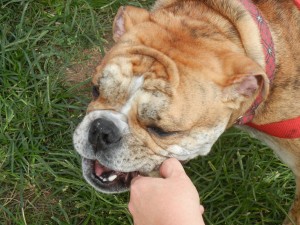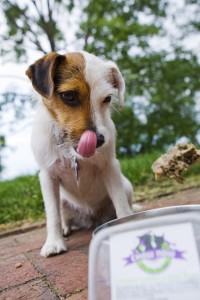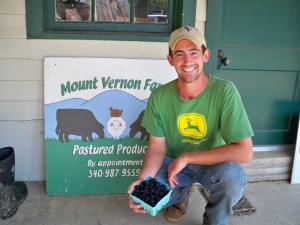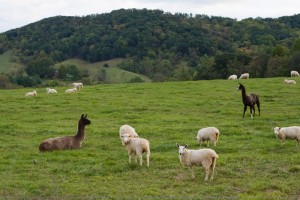“I got tired of drinking bad coffee” – Monty of Cabin Creek Roasters, Edinburg, VA.
Every local entrepreneur has a story – a reason for being, a call, a mission, a purpose. As Norm and I sat down to dinner (locally grown) at our campsite last night, we reflected on all of the inspiring localpreneurs we’ve hung out with just this week.
We’re so fortunate to have relationships with many of the best local farmers in the Commonwealth. This being the height of the produce season, I’m visiting with our fruit and veggie partners on a very regular basis. Everything’s super fresh and vibrant – one day I even waited while the crew cut Swiss chard for us, still warm from the morning sun. And though everyone’s busy, we always take a minute to catch up, discuss the weather (brutal but not unexpected) and families and the future. Farmers are some of the most optimistic people I know. And they all share one common thread. They want to nourish their communities with the healthiest food possible, no matter the sacrifices and hardships they face in their own lives. The best and prettiest produce always goes to the customers, while the blemished and misshapen inhabit their own tables.
And even though farming means longer, harder hours then most of us can imagine – they then bring all that goodness to us, making it convenient to eat well – through farmers markets, buyers clubs neighborhood deliveries and deliveries to our local stores.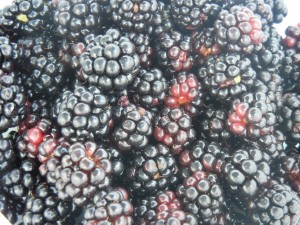 Our friends Molly and Mike Peterson of Mount Vernon Farm know this routine well and go out of their way just to accommodate everyone – including taking care of our furry friends by meeting us for Pawgevity pickups on off delivery weeks.
Our friends Molly and Mike Peterson of Mount Vernon Farm know this routine well and go out of their way just to accommodate everyone – including taking care of our furry friends by meeting us for Pawgevity pickups on off delivery weeks.
Our localpreneur experiences aren’t limited to just food but other forms of nourishment as well. Thursday evening we experienced locally produced art and wine courtesy of Barrel Oak Middleburg and the Byrne Gallery. Middleburg, VA has become quite the art and vino lovers’ destination with the opening of BOM – where you can sip tasty wine (with your dog, no less) as you peruse lovely art – followed by a short stroll down the street to view the current exhibition of Vienna, VA abstract artist Nia Tavlarides Stratos at the Byrne. If you don’t think you like abstract art, run don’t walk to Nia’s exhibition – this DC native artpreneur brings pure joy and beauty to every canvas she touches – a calling – in her words “I see art in everything, every moment, every day”. (Confession – Nia and I have been friends since kindergarten and I’ve watched her art evolve from elementary school to world class talent).
But back to foodpreneurs – obviously a favorite topic! Yesterday we hit two farmers markets – one very small, one quite large – both fun destinations with uniquely wonderful local goods. New Market, VA was our first stop where we picked up Cabin Creek Roasters coffee; corn relish and other goods from our Shenandoah Farms friends; baked yummies and even locally produced eco laundry and dish detergent. One of our favorite finds was this recycled, repurposed bag – we didn’t meet the woman who makes them but simple, pure, purposeful, entrepreneurial genius.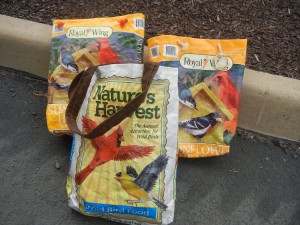
Then on to Harrisonburg – the farmers’ market was abuzz with activity. Between the two stops, we picked up our groceries for the week. Sprite melon (ever tried these cute little guys? – they’re wonderful), cantaloupe, elderberries, tomatoes, basil, arugula, baby purple potatoes, mini eggplant, garlic, rainbow radishes, Firefly Garlic Fire hot sauce (their tagline: “It will light your a.. up!”), A Bowl of Good stuffed bread, shitake mushrooms, bi-color corn. All grown and produced locally – some picked just that morning. We tried to purchase a little something from each of the stands as all had so much to offer.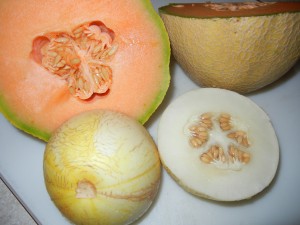 Focus is always on the unique, heirloom, unrecognizable – we encourage you to try something new from your farmers market every week – it encourages the farmers to diversify and grow things you’ll never find in the supermarket. Move over Monsanto!
Focus is always on the unique, heirloom, unrecognizable – we encourage you to try something new from your farmers market every week – it encourages the farmers to diversify and grow things you’ll never find in the supermarket. Move over Monsanto!
Shopping wasn’t limited to healthy fantastic foods, however – I wasn’t able to resist Staunton artist Carmen Rose’s handcrafted art glass earrings, especially after meeting Carmen. The story behind the ingenious recycled puzzle piece earrings she had on display – “I woke up one morning with this great new idea to make earrings using puzzle pieces! Later I was looking on etsy and – it had already been done”. She tweaked her organic vision and made her own take on them. I’ll be picking up a pair of those on our next trip.
Want to support your locals? Let’s spread the word. Who are some of your favorites?
